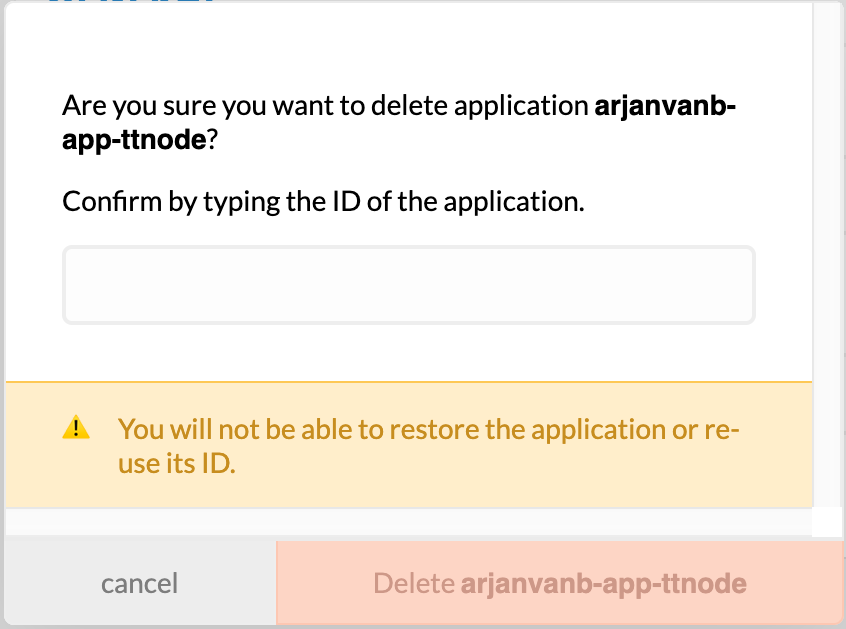@htdvisser, two years later, but this seems to be the proper topic to tell people how to proceed if things have changed:
-
Can one delete an application that still has devices registered to it?
-
If yes: would not deleting the devices before deleting an application orphan those devices, or would they be unregistered on the fly?
-
Would re-using the same AppEUI, AppKey and DevEUI work when an earlier device registration with the same details once existed?
I know you once wrote on Slack:
@htdvisser [Jan 11th 2019 4:24 PM]
We use the AppEUI+DevEUI combination as identifier for a device, so as long as you use different AppEUIs for devices with the same DevEUI, you should be fine for now (but you may encounter problems in v3 if you would use LoRaWAN 1.1 ReJoinRequests)
Also, when not deleting an application, one cannot register the same AppEUI and DevEUI twice:

failed to register device
Device with AppEUI and DevEUI already exists
Deleting an application that still has devices registered to it, does not mention those devices in its confirmation message, but I’ve not tried to see what happens when proceeding:

Finally, on GitHub I see about ttnctl, emphasis mine:
ama9910 commented on 21 Aug 2017
The issue I observed is that when deleting an application with ttnctl, the devices remained active. There is now no way to delete those devices using ttnctl, without first selecting the now deleted application - which can’t be done.
…
johanstokking commented on 21 Aug 2017
Yes, these are two separate things. We will take unarchiving into account for the next version of the account server. When an application is deleted, it should be unregistered from the handler, which invokes deleting devices.

